Day 50 (3rd July) Dunhwang
We got a taxi to the Mogao Caves Visitor Centre and joined about a million other people in the queue for tickets, about twice as many as when we went in 2018. They are now having to stagger the number of people able to go at one time so we reached the ticket office and were told we couldn’t go until 11.30. Fortunately an American lady of Chinese heritage came running up to us and told us we had to be in the queue at 10.30 to get the tickets for 11.30. Eventually, we had our tickets and were in the queue for two dramatic films in a round cinema which shows stuff in all directions. In the first we were members of a camel caravan assailed by sandstorms, rock avalanches and attacks by bandits. We then (all 1,000 of us, literally) made a mad rush for the next room which put us in the middle of various caves. We then joined an enormous queue to see the caves before Heifen Zhang, a charming tour guide leading a group of Americans from Beijing, called us to join a separate queue for foreigners for which an English-speaking guide was waiting.
We have been round the caves before but had forgotten just how stunning they are. The first was dug by a wandering monk in the 4th century and monks bringing Buddhism from India dug more to provide shelter on their journey from India across the Taklamakan desert to Xian. The earliest caves show the Indian influence with the Buddha having a darker skin, rounder eyes and wearing Indian clothes. Most of the caves were cut by Silk Road travellers during the Tang Dynasty from the 7th to the 10th centuries and the Buddha looks distinctly Chinese.
We are not allowed to film inside the caves so I made a note of the numbers we visited and will upload pictures of them when I see them in books. We saw caves 332, 16-17, 428, 267, 259 and 249 plus some others where my photo of the number didn’t come out correctly. A notable memory is the depiction of one of the Buddha’s disciples who, seeing a starving tiger with its cubs at the bottom of a cliff, threw himself off the cliff. The tiger was too weak to eat the man so he killed himself and the tiger drank his blood and recovered. The cave artist didn’t know what a tiger looked like so he drew a snake. We also saw the small statue known colloquially as the Mona Lisa Buddha. Looked at directly, it looks like all the other Buddha statues. But the guide moved her torch slowly upwards and the Buddha’s lips curved into an enigmatic smile.
We finally joined a queue of thousands and in a massive surge of humanity got carried into cave 96 which has the world’s third largest stone Buddha (we saw the first at Luoshang in a cliff beside a river in 2018) and, after noticing its enormous feet, looked up to see its head 35 metres higher poking out of the top of the cliff into which the cave was cut.
There is a beautiful museum with models of some of the buildings depicted in the cave drawings. It also has a number of replica caves with copies of the drawings and I have attached these. We then returned to the hotel and booked tickets for the “Silk Road Flower Rain Show” opera at the Grand Theatre the following night.
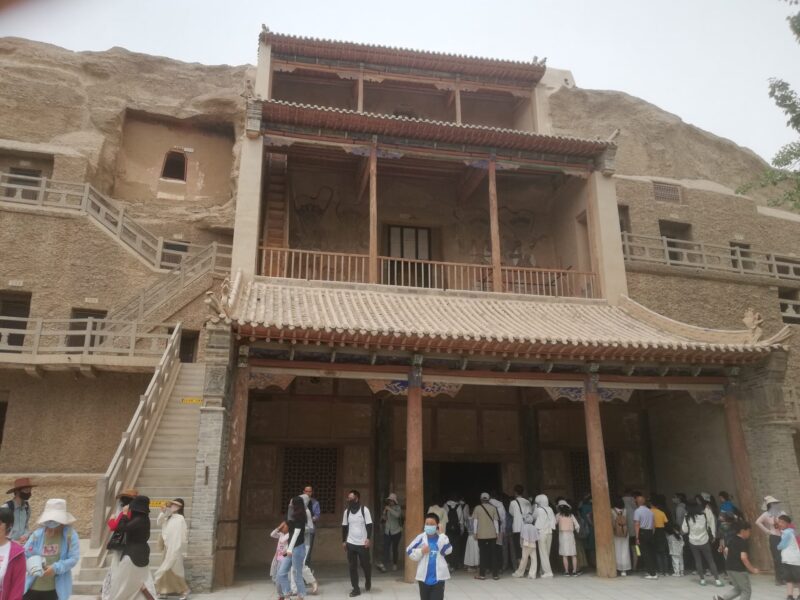
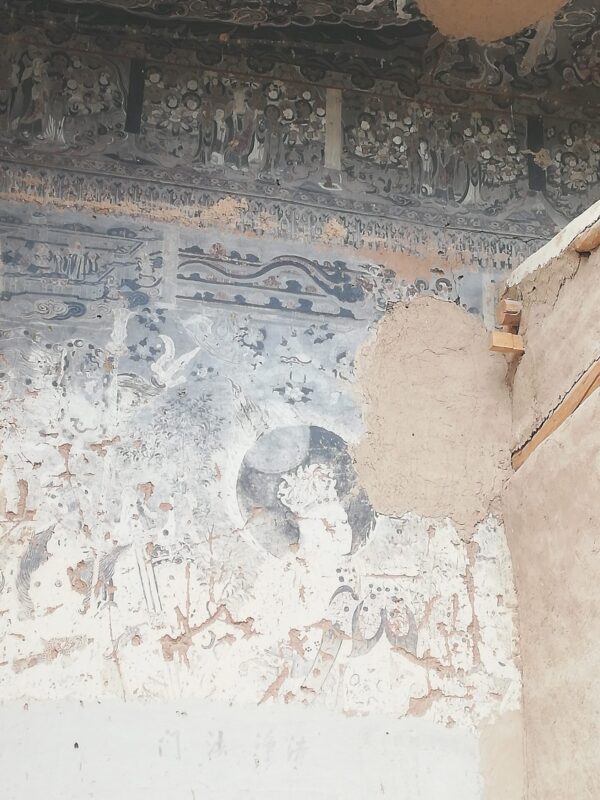
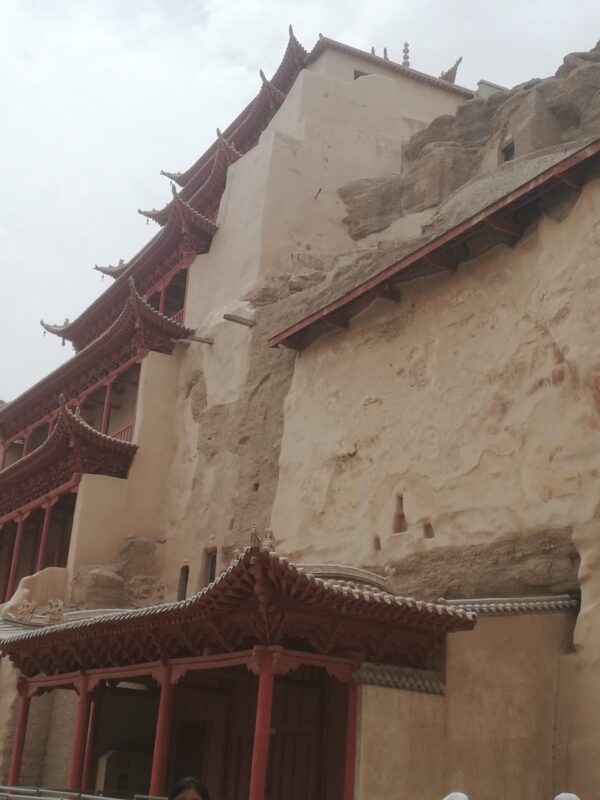
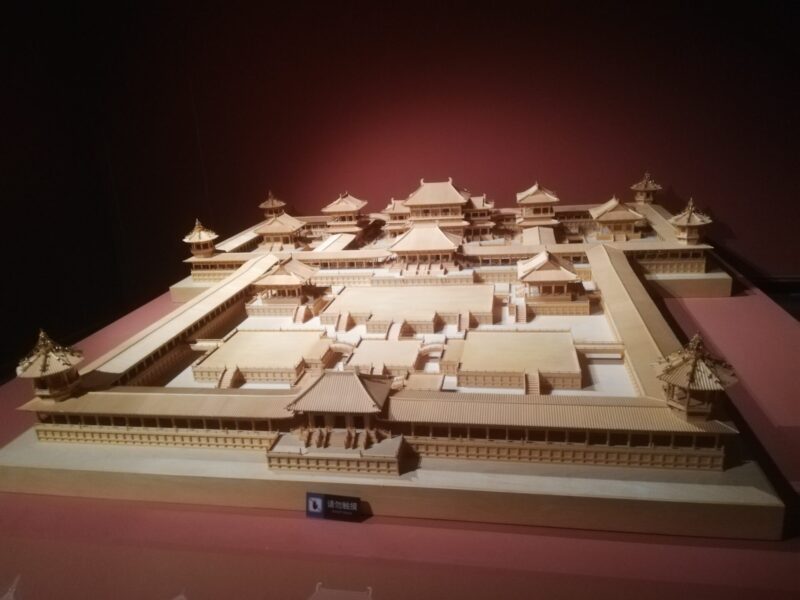
Model of a Chinese city in the museum. It looks like Jiayuquan
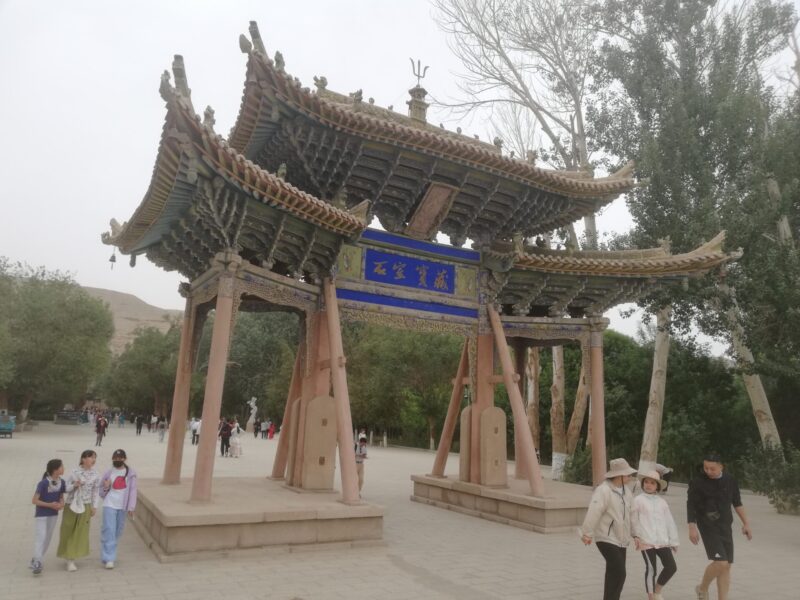
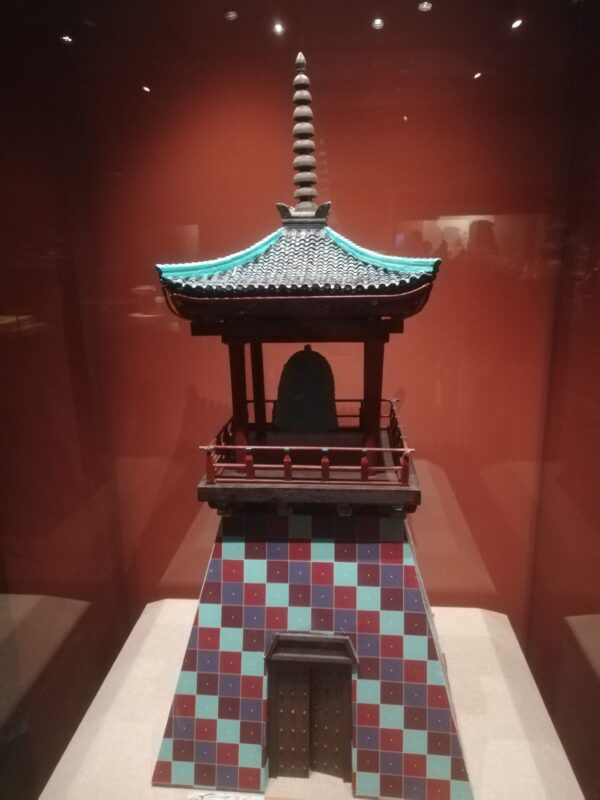
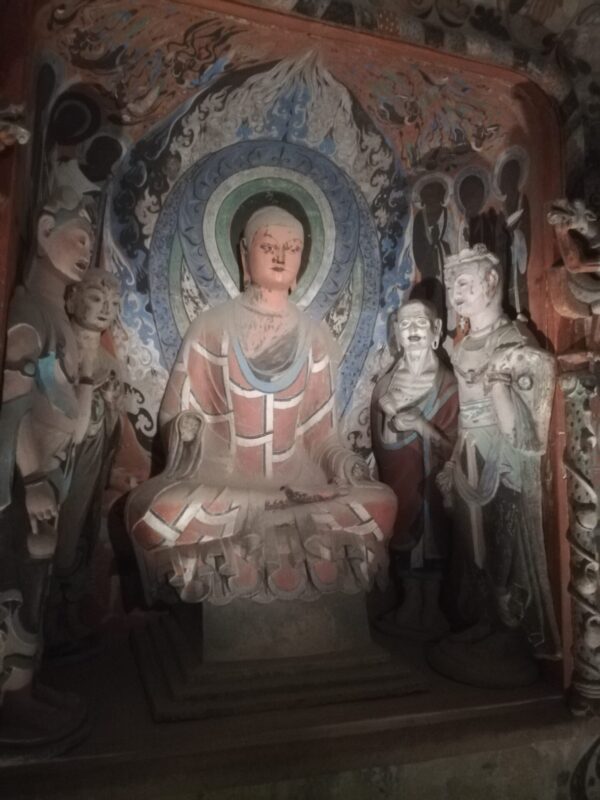
Replica of a cave in the museum
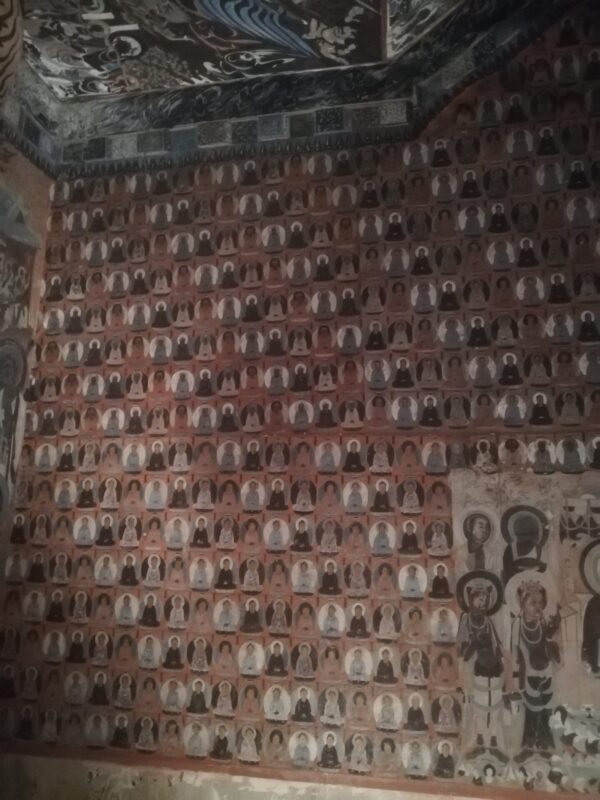
Cave 220
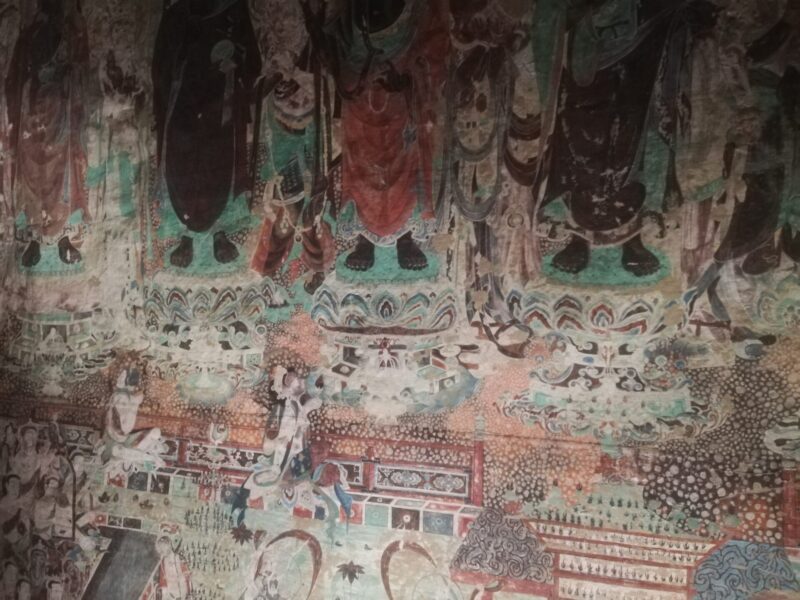
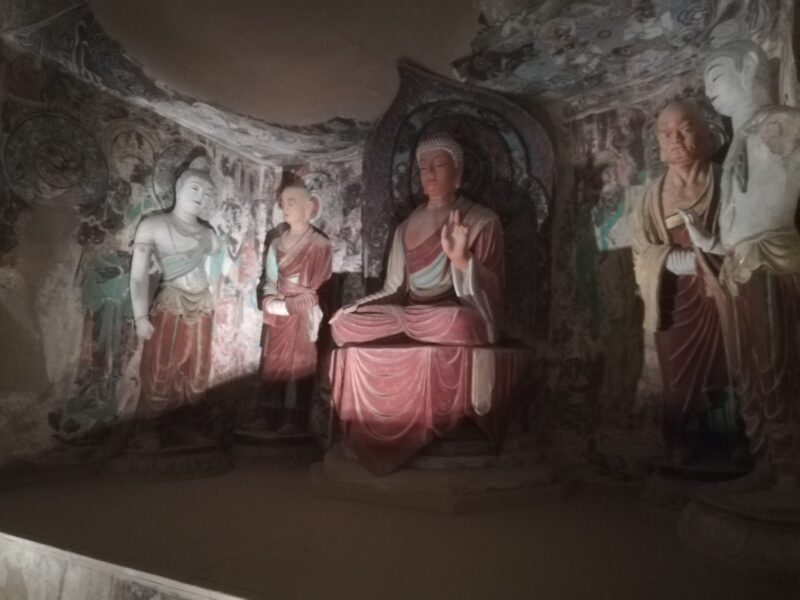

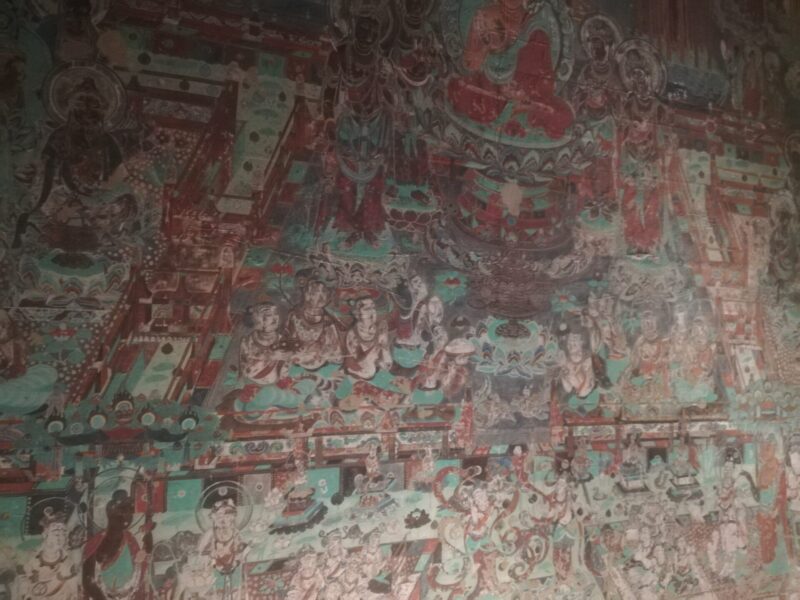

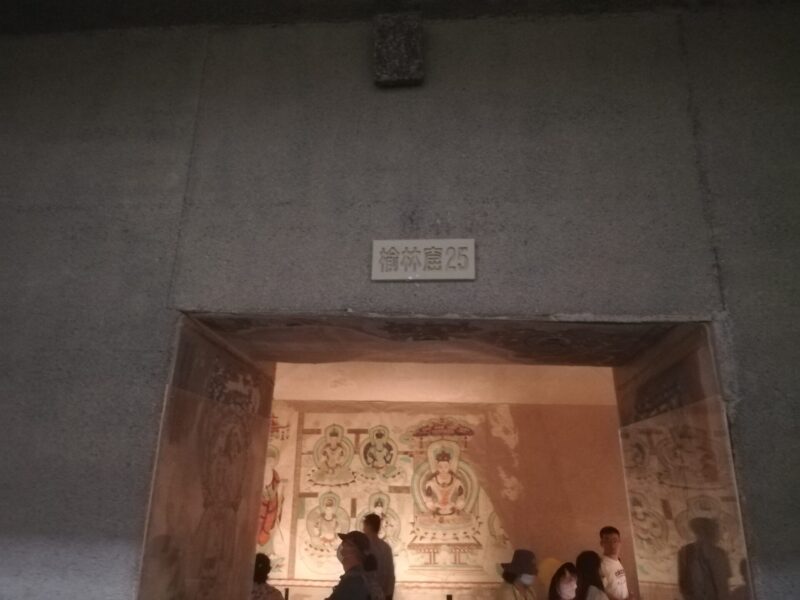
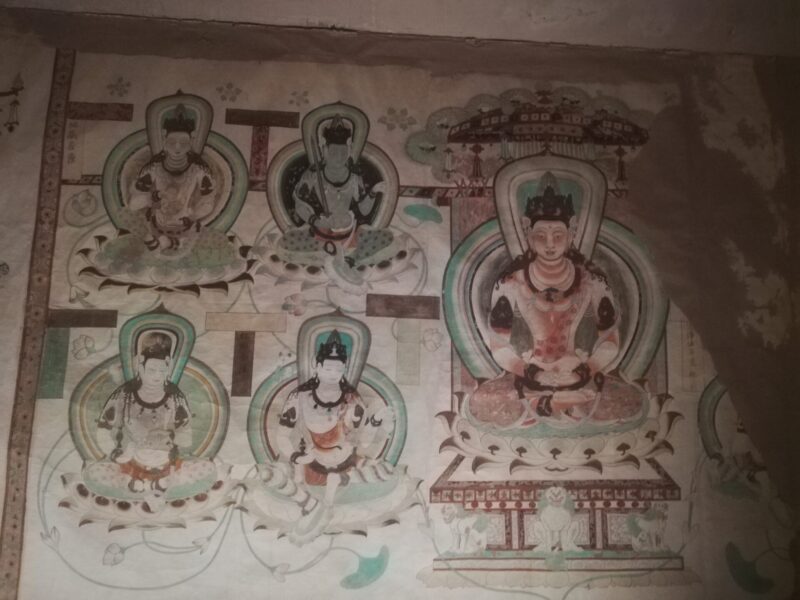
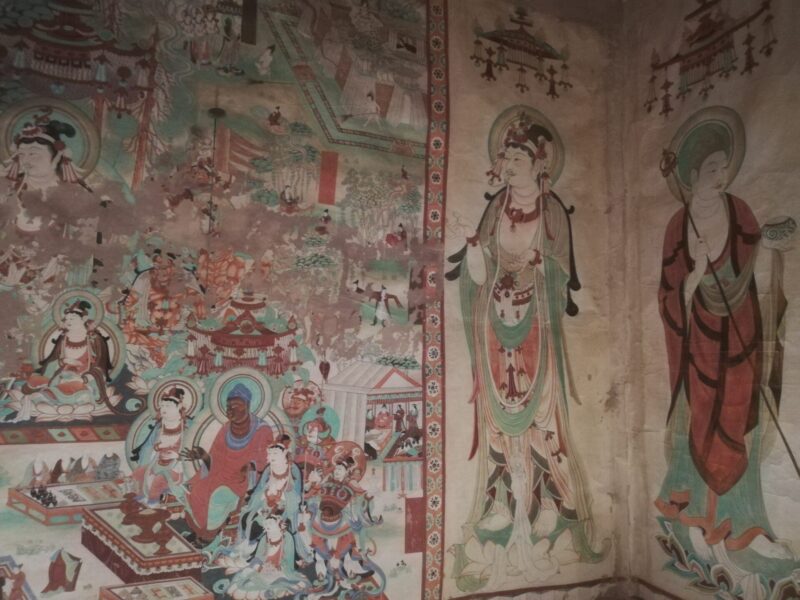
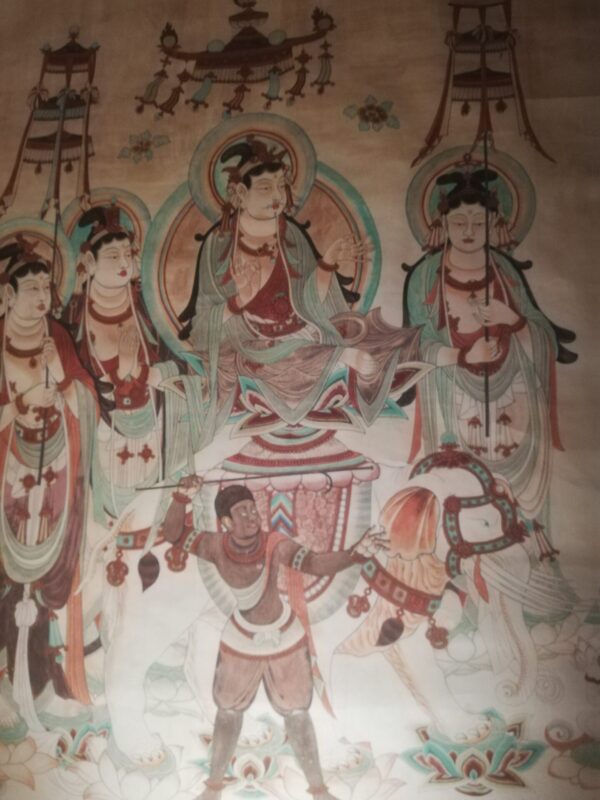
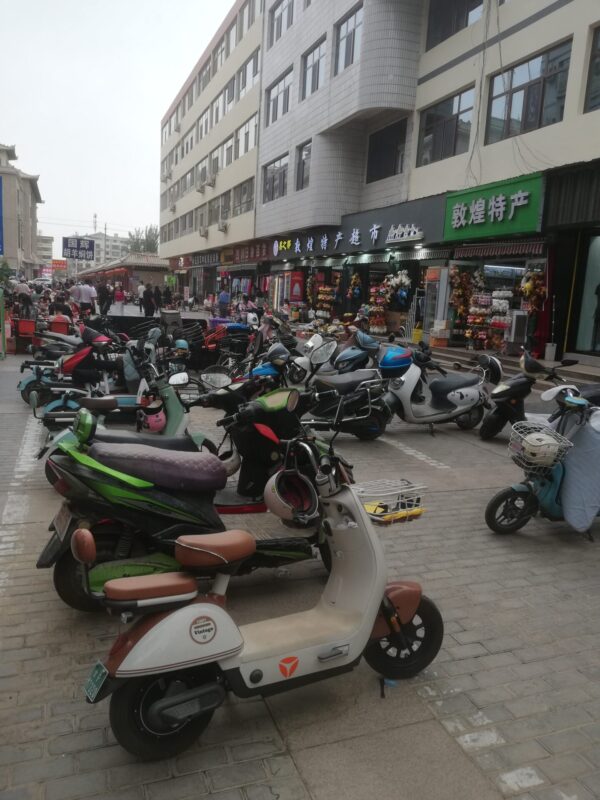
Motor scooter street where we had our evening meals